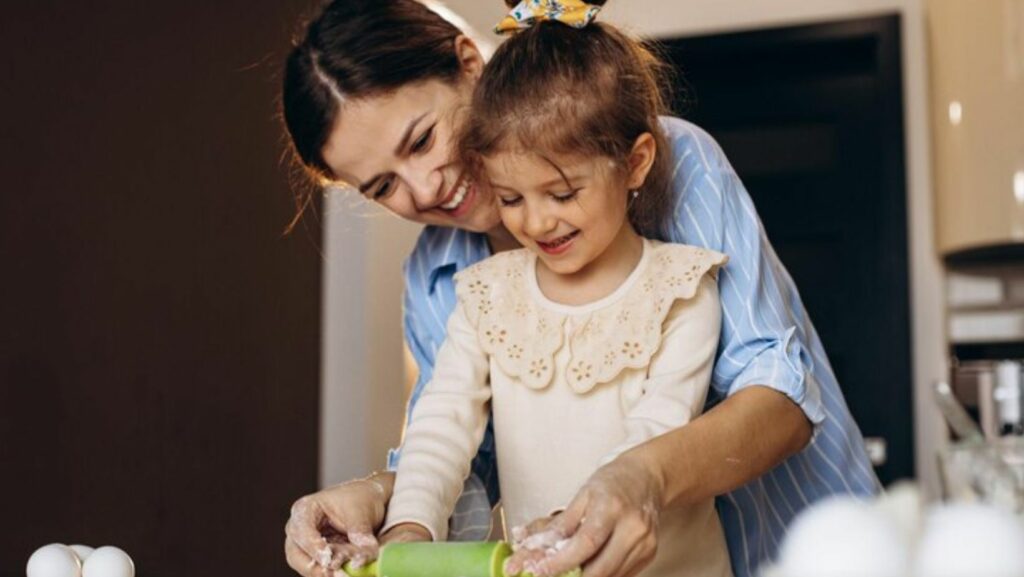Instilling cooking and baking safety skills in children is not only a valuable life lesson but also a fun and interactive way to bond with them in the kitchen. Ensuring that they understand and practice safety measures can prevent accidents and instill a lifelong passion for culinary arts. In this guide, we will explore essential tips to teach your kids cooking and baking safety while keeping the learning process engaging and enjoyable.
Teaching Them How to Use a Cutting Board
Teach them to use a cutting board to prevent damage to countertops and knives. This simple practice not only preserves your kitchen tools but also ensures safety by providing a stable surface for cutting and chopping. Explain the importance of this practice, emphasizing safety and cleanliness. Reinforce the idea that a clean workspace reduces the risk of contamination and accidents.
Fun Learning with Online Resources and Free Classes
Utilize online resources to make learning cooking safety enjoyable. The internet is a treasure trove of age-appropriate videos, games, and websites that convey safety messages in a fun and engaging way. Share these resources with your children, making learning a delightful experience.
Additionally, mention the availability of free online cooking classes for those looking to improve their skills. Highlight the value of continuous learning and how these classes can benefit both parents and children, fostering a culture of safety and culinary exploration.
Turn Your Kitchen Into a Money Maker
Teaching kids how to start a food business, such as a bakery, introduces them to the principles of entrepreneurship, financial literacy, and the importance of creativity in food presentation and photography.

It also emphasizes the role of effective branding in the culinary industry, helping them understand how to build a distinctive identity that appeals to customers, setting the foundation for a successful future in any food-related endeavor.
Mastering the Vegetable Peeler
Teach them to use a vegetable peeler safely. While it may seem like a straightforward task, proper technique is crucial to prevent accidents. Emphasize proper hand placement and control to prevent slips and injuries. Encourage your children to practice under your supervision until they are confident in their skills. This not only teaches them valuable cooking skills but also instills discipline and attention to detail.
Creating a Safety Rules Poster
Creating a safety rules poster with your children to hang in the kitchen is a hands-on project that not only reinforces the importance of safety but also encourages creativity and teamwork. To make it a creative and engaging poster, use free online poster designing tools. Choose a template and create a poster featuring your favorite photographs, colors, and fonts. Displaying this poster prominently in the kitchen serves as a constant reminder of good practices.
Timing Is Everything
Time Timer suggests instructing them to use a timer to avoid overcooking or burning food. Timing plays a vital role in culinary success, and instilling this habit early on sets the foundation for becoming a skilled chef. Explain the importance of precise timing, which not only ensures food safety but also enhances the flavors and textures of dishes. Emphasize the difference between various cooking times for different ingredients to broaden their understanding.
Kitchen Upgrades
Upgrading your kitchen can greatly enhance the experience of teaching kids cooking skills by incorporating user-friendly features and safer appliances, making it easier for young learners to navigate and participate. Improved layouts and modern equipment can foster a more engaging and interactive environment, encouraging creativity and experimentation with recipes.

Additionally, state-of-the-art kitchens can include child-friendly tools and adjustable workspaces, ensuring that children of all ages can cook comfortably and safely, thereby building their confidence and culinary skills from a young age. When making upgrades, take into account your renovation budget and the timing of the projects.
Food Handling Expertise
It is imperative that you teach children how to handle food safely, including proper storage and avoiding cross-contamination. Children should learn the basics of food safety to prevent foodborne illnesses. Share practical tips on storing ingredients, including perishables and pantry items, and keeping the kitchen hygienic. Explain the significance of washing hands before and after handling food and the importance of using separate cutting boards for raw meat and vegetables.
The Temperature Test
Educate them on the safe use of a thermometer in cooking and baking. Temperature control is critical in ensuring that food is both safe to eat and delicious. Highlight the significance of cooking food to the correct temperature for safety and taste.
Show them how to use a food thermometer correctly, and involve them in checking if dishes are done. This hands-on experience not only teaches them about food safety but also hones their culinary skills. This includes the use of an air fryer microwave, which can produce food dishes that are extremely hot, so users beware!
Empowering your children with cooking and baking safety skills not only ensures their well-being in the kitchen but also nurtures a love for food and cooking. By following these tips, you can create a safe and enjoyable culinary environment for your family. As you bond over delicious meals, you’ll also be instilling invaluable life skills that will serve them well in the future.

